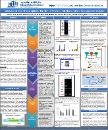Validation of Novel Transcriptional Targets that Underpin CD44-promoted breast cancer cell invasion
| Author | Ahmad, Salma |
| Author | Nazar, Hanan |
| Author | Alatieh, Nouralhuda |
| Author | Al-Mansoob, Maryam |
| Author | Farooq, Zainab |
| Author | Yusuf, Muna |
| Author | Ouhtit, Allal |
| Available date | 2021-10-18T08:15:43Z |
| Publication Date | 2021 |
| Publication Name | Qatar University Annual Research an Exhibition 2021 (quarfe) |
| Citation | Ahmad S., Nazar H., Alatieh N., Al-Mansoob M., Farooq Z., Yusuf M., Ouhtit A., "Validation of Novel Transcriptional Targets that Underpin CD44-promoted breast cancer cell invasion", Qatar University Annual Research Forum and Exhibition (QUARFE 2021), Doha, 20 October 2021, https://doi.org/10.29117/quarfe.2021.0153 |
| Abstract | Introduction: Breast cancer (BC) is the most common cancer worldwide, and metastasis is its worst aspect and the first cause of death. Metastasis is a multistep process, where an invasion is a recurring event. The process of BC cell invasion involves three major factors, including cell adhesion molecules (CAM), proteinases and Growth factors.CD44, a family of CAM proteins and the hyaluronic acid (HA) cell surface receptor, acts as cell differentiation, cell migration/invasion and apoptosis regulator. Rationale: We have previously established a tetracycline (Tet)-OFF-regulated expression system, both in vitro and in vivo (Hill et al, 2006). As a complementary approach, the highly metastatic MDA-MB-231 BC cells expressing high levels of endogenous CD44s (the standard form of CD44), was cultured in the presence and absence of 50 µg/ml of HA. RNA samples were isolated from both cell experimental models, and microarray analysis (12K CHIP from Affymetrix) was applied. More than 200 CD44s transcriptional target genes were identified and were sub-divided into groups of genes based on their function: cell motility, cytoskeletal organization, ability to degrade ECM, and cell survival. Hypothesis: Among these 200 identified genes, we selected seven genes (ICAP-1, KYNU, AHR, SIRT1, SRSF8, PRAD1, and SOD2) and hypothesized that based on evidence from literature, these genes are potential novel targets of CD44-downstream signaling mediating BC cell invasion. Specific Aims: Pursuant to this goal, we proposed the following objectives: 1- Structural validation of ICAP-1, KYNU, AHR, SIRT1, SRSF8, PRAD1 and SOD2 as novel transcriptional targets of CD44/HA-downstream signaling at both RNA and Protein level using reverse transcription polymerase chain reaction (RT-PCR) and Western Blot respectively. 2-Functional validation of ICAP-1, KYNU, AHR, SIRT1, SRSF8, PRAD1and SOD2 as novel transcriptional targets that underpin CD44-promoted BC cell migration using wound healing assay after the transfection with siRNA.Innovation/Consclusion: This study validated seven transcriptional targets of CD44/HA-downstream signaling promoting BC cell invasion. Ongoing experiments aim to dissect the signaling pathways that link CD44 activation by HA to the transcription of these seven genes. |
| Language | en |
| Publisher | Qatar University Press |
| Subject | Breast cancer Tumor invasion and metastasis CD44 Hyaluronan Microarray |
| Type | Poster |
Files in this item
This item appears in the following Collection(s)
-
Biological & Environmental Sciences [794 items ]
-
Theme 2: Health and Biomedical Sciences [80 items ]


